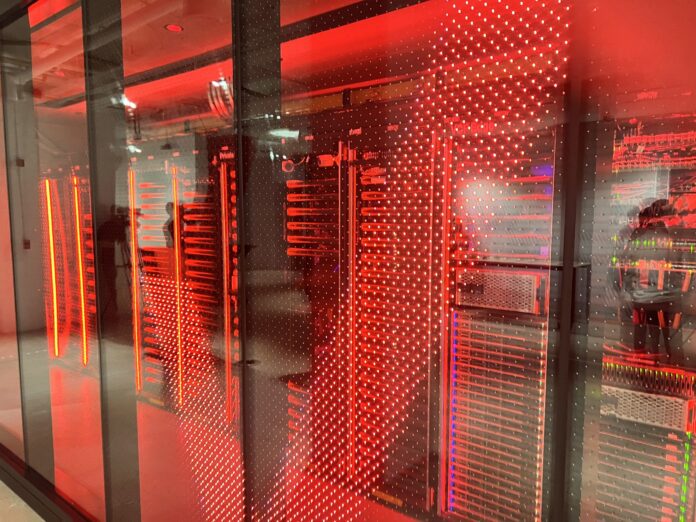With the Verizon Cloud Platform and virtualization learnings, the operator sees “a distinct competitive advantage”
Verizon has virtualized more than 10,000 cell sites so far, and is working toward a goal of bringing vRAN to more than 20,000 sites by the end of 2025. In combination with its virtualized 5G core and Verizon Cloud Platform, the operator reported a material improvement in the pace it can push software upgrades to RAN locations—a 4x increase in the number of sites receiving software upgrades in a single night compared to six months ago. But what does this technological capability, backed by Verizon’s evolving workforce, mean for customers?
“There are literally thousands of improvements that get pushed to the network every month, every year,” Adam Koeppe, SVP of Technology Strategy and Planning at Verizon, told RCR Wireless News. “Of particular note, when you look at how fast technology changes in the radio access network, there are constantly service improvements being pushed to the cell sites.” He gave the example of the throughput increase that came with increasing deployed C-Band spectrum from 60 megahertz to 100 megahertz on the way to 200 megahertz. Koeppe also referenced software-based improvements in latency. “They’ll very rapidly be distributed across all the sites. The things that benefit the customers go from…lab to production in a much more rapid timeframe” in a virtualized environment.
Verizon has built and deployed its own private cloud, the Verizon Cloud Platform, to host virtualized administrative and network functions; there’s a common architecture spanning the core, edge and far edge (cell sites). “The most notable change in the far edge part of our cloud platform,” Koeppe explained, “…is our ability to build scripting, orchestration and automation on top of that cloud platform. This is something that’s just not physically possible” in a legacy network.
Further on the orchestration and automation toolchain it has built out, Koeppe said the speed of improvement continues to accelerate.. “The smarter that process gets and the more mature it gets, the faster it gets. There are less errors, there are less delivery failures. That pace by which you can administer change to your cloud platform gets better and better over time.”
A passing comment on the industry debate around whether moving network workloads into the public cloud is an inevitability due to various economic drivers: “I look at the progress that we’ve made from the early days of virtualization, and the way our employees have embraced this new technology—have quickly become experts…as a distinct competitive advantage for us. We manage our own internal cloud platform for a reason. That allows us to have the greatest control over the customer experience.”
CI/CD and the evolution of operator/vendor dynamics
As telecom networks become increasingly virtualized and operated in cloud environments, there’s a refrain around the need for operators to develop continuous integration/continuous delivery (CI/CD) pipelines akin to the workflows developed in the world of enterprise IT. While Koeppe acknowledged that the company’s engineers aren’t incredibly fond of the “CI/CD” characterization, he said the speed of bringing new software features from vendors into an automated test process and out into the live network has come with “a bit of a knowledge shift.”
“One of our biggest assets here, and absolute competitive differentiator, is the people we have running our networks,” he said. “When we have technical evolution across any part of our network, our people step up to that challenge and become an industry leader overnight, then really push the industry forward.”
Another aspect of virtualization is what it means for how operators and vendors work together. Koeppe said Verizon’s biggest challenge in this context “is ensuring they move as fast as we do” in terms of testing and delivering updates. To help illuminate how that changes supplier relationships, Koeppe looked back to the traditional dynamic.
“If you go all the way back to the beginning, before virtual networks were even a part of of a telecommunications network, you really had a kind of supplier silo. You bought a box” containing hardware, software and proprietary tech. “In a virtual world, we’re able to really kind of separate that hardware from the software. As a result you do have different relationships with your suppliers…A hardware-agnostic cloud platform, it has allowed us to bring in new suppliers into the mix, and that generates innovation, that generates competition. There’s multiple benefits.”
Bottomline
Big picture and final thoughts from Koeppe on virtualization, the Verizon Cloud Platform, customer-facing benefits and the people that make all that happen: “It’s one of those things that tends to run a little bit behind the scenes. When you look at how networks are administered and managed, so much incredible innovation occurs from the operations teams, from the engineering teams, that solve these challenges. When you’re carrying live traffic on a network…there was no blueprint for what Verizon has done in terms of having an internal cloud platform that’s running telecommunications applications…We have tremendous pride in the teams that have led this charge because there was not a blueprint we followed. We created this trail ourselves.”

